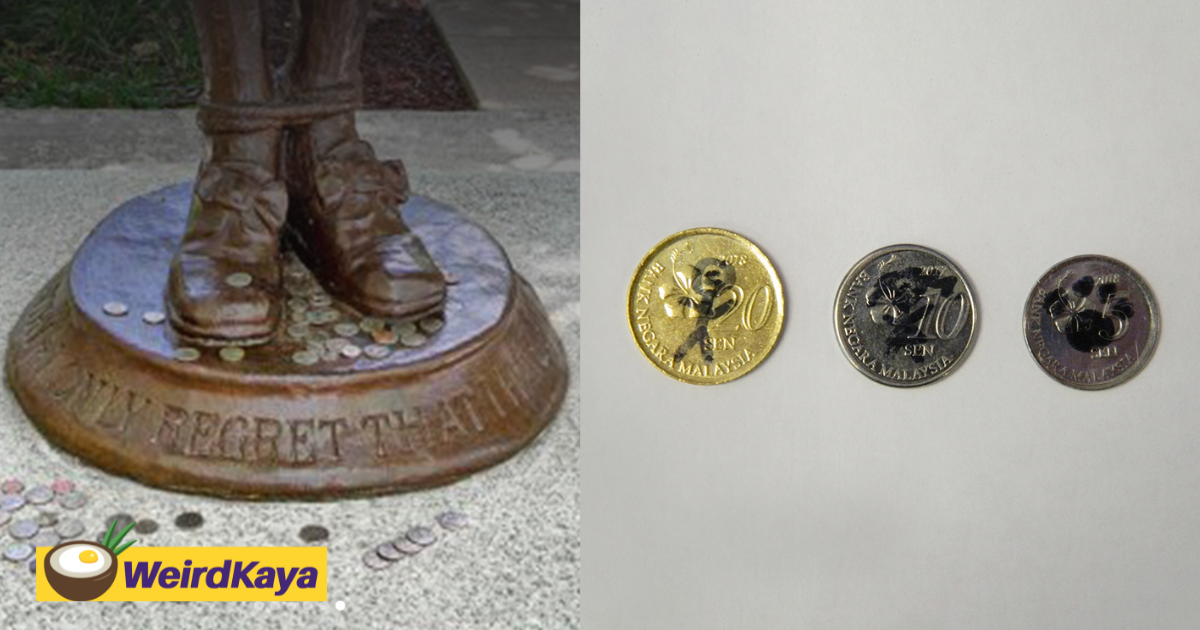The U.S. Central Intelligence Agency (CIA) recently caught everyone’s attention after posting a photo of three Malaysian coins on its official X (formerly Twitter) account.
The coins — 20 sen, 10 sen, and 5 sen — weren’t just ordinary currency.
Each had black doodles: a stick figure, strange symbols, and what looked like an animal paw print.
Naturally, Malaysians were puzzled.
The photo was actually part of the CIA’s “Artifact of the Week” series.
The coins were discovered at the statue of Nathan Hale, which stands at the CIA’s Original Headquarters Building in Langley, Virginia.
So who is Nathan Hale? He’s considered America’s first spy, a young patriot who volunteered for an intelligence mission during the Revolutionary War.
The statue outside CIA HQ captures the moment before his execution: hands and feet tied, head held high, eyes fixed on the horizon — a symbol of loyalty and sacrifice.
Why the coins?
Over the years, a tradition developed among CIA officers: before heading overseas, they leave a coin at Hale’s statue for good luck and protection.
According to legend, it brings good fortune and ensures Hale watches over them on their mission,” the CIA explains.
Most officers leave a U.S. quarter or 76 cents to honour 1776, the year of Hale’s execution.
Others add a personal touch by leaving foreign coins with unique markings like these Malaysian ones.
As for the doodles, they’re likely personal symbols added by individual officers, possibly to represent a team, mission, or just for fun.
The CIA doesn’t keep them as trophies.
All coins left at the statue are collected and donated to charities like the CIA Officers Memorial Foundation and the Third Option Foundation, which support fallen officers and their families.
Artifact of the Week: Coins Left at the Statue of Nathan Hale
— CIA (@CIA) July 15, 2025
Learn more: https://t.co/bhyUFYvkDC pic.twitter.com/koqZCPQZtS
They’re not kept as souvenirs. The CIA says the coins are eventually collected and donated to foundations supporting CIA officers and their families.



